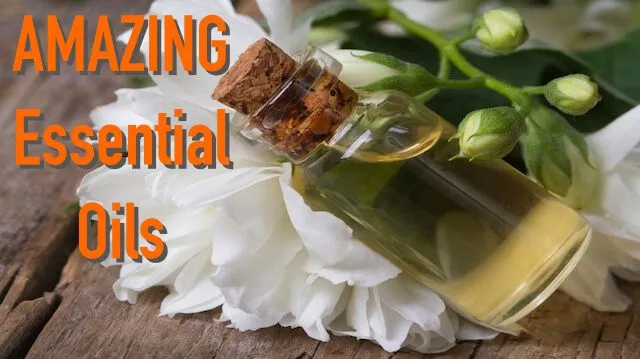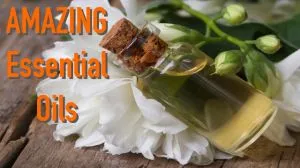
- Share on Facebook2020
- Share on Pinterest
- Share on Twitter
Life is full of aches and pains — some minor, some major. After a long day, many people find themselves reaching into the medicine cabinet for some aspirin to soothe the daily stress headaches, joint pains and muscle aches that come with simply being human.
Sufferers of chronic pain may reach for stronger medications, and those of us who are highly anxious may choose sleeping pills just to wind down. However, these types of drugs are not innocuous, and often come with dangerous side effects that accumulate the more we take them. Luckily, nature has a solution.
One of the most invigorating and enjoyable natural ways to manage everyday aches and pains — and even serious, chronic pain — is the application of essential oils. Essential oils are potent and highly concentrated oils of plants, which many of our modern medicines are actually derived from — without the added chemical content.
Depending on the type of pain and the type of oil, they can be applied directly to pressure points, used in massage combined with a base oil, or taken internally mixed with water. Be sure to read the application and ingestion methods of the oils that you choose, as some are too potent to be applied directly to certain areas.
It’s important to buy essential oils from a company that you trust and have investigated thoroughly. There is a great disparity in the purity and efficacy of low-quality oils versus those that are skillfully and meticulously grown, harvested and distilled. The following oils are some of the best in dealing with pain.
Wintergreen: The wintergreen plant is the only plant in the world besides the birch tree that contains natural methyl salicylate, the main ingredient in aspirin. It was commonly used by Native Americans as a general pain tonic.
Research proves that wintergreen oil has a cortisone-like effect and is able to relieve pain quickly. It has anti-inflammatory, analgesic, and antispasmodic properties, and therefore is often effective against headaches, muscle pain, and stiff joints — anything you would use aspirin for!
It’s important to note that wintergreen is one of the strongest essential oils and should never be consumed. It is also unsafe for children and those with a history of epilepsy.
Spruce: The essential oil of the spruce tree is aromatic, sweet and refreshing, and has been hailed since ancient times for its ability to relax the body and center the mind, as well as to ward off infections.
It is a potent immune system stimulator, and has been successfully used to ease arthritis symptoms, rheumatism, lower back pain, bone pain and sciatica. Spruce essential oil can also stimulate the adrenal glands, which offers a boost to the entire body.
Lavender: One of the top favorites of essential oil enthusiasts for relaxation and pain relief, lavender is also one of the gentlest essential oils on the skin. It is traditionally used to treat headaches, tension, insomnia, muscle strain and various cramps.
One study found that lavender essential oil used as part of an acupressure treatment helped reduce lower back pain by 39 percent. Walking speed and spine flexion in the back pain sufferers were also improved by this treatment.
Lavender also aids the digestive system, therefore relieving many types of stomach discomfort, and has antiseptic properties that naturally help wounds heal. On top of that, this delicious-smelling oil can help to relieve the mental distress caused by mood swings, anxiety and depression.
This effect has been demonstrated by studies to be beneficial for women in labor — by helping to alleviate pain that stems from anxiety and fear. Cancer hospice patients have also shown improvements in depression and a sense of well-being following treatment with lavender essential oil.
Marjoram: Known as the “happiness herb” and the “joy of the mountains,” marjoram has strong sedative properties. The essential oil extracted from marjoram is excellent in treating stiffness, muscle spasms, migraines, and arthritis pain. It also effectively relaxes involuntary muscle groups, including the heart, diaphragm and colon. As a result, it can be used to help with asthma, bronchitis and constipation, along with supporting heart health. Marjoram is also used to aid sufferers of emotional trauma and distress.
Sandalwood: A staple in Ayurvedic medicine, sandalwood essential oil is often used to treat muscle spasms, lymph node congestion and sciatica. It is effective in relieving skin irritations such as poison ivy and insect bites due to its anti-inflammatory nature.
This oil is very refreshing to the skin, smells rich and earthy, and promotes deeper sleep and calm, and meditative states of mind. Furthermore, it supports both the digestive and cardiovascular systems. Sandalwood oil is sometimes combined with a base oil and applied to the bottoms of the feet.
Ginger: Ginger is also commonly used in Ayurvedic medicine. It has been shown to inhibit the synthesis of eicosanoids, which are chemical signalers involved in the sensation of pain.
A study was conducted among elderly people with chronic knee pain. It was found that four weeks of massage with a combination of ginger and orange essential oils helped decrease the intensity of pain and stiffness level, and improved physical function compared to another group who received massage with just olive oil.
Another study found that 75 percent of the patients with rheumatoid and osteoarthritis benefited from treatment with ginger oil, experiencing lessened swelling and pain. None experienced adverse side effects, even when treatment was continued for longer than two years.
Fennel: Fennel essential oil is produced by crushing the seeds, then distilling them with steam. Studies in animals have shown that fennel essential oil can help with discomfort associated with menstruation. Traditionally it is used for a relaxing effect on nerves, muscles, intestines and the respiratory system. It has an antispasmodic effect, which can relieve the source of many types of pain.
Clove: The essential oil extracted from the dried flower buds of clove has anti-inflammatory and anaesthetic properties. It is frequently used for tooth pain and can also help with throat infections. It is often added to pharmaceutical and dental products.
Clove oil is said to have stimulating and warming properties, so it can be used to improve circulation and stimulate the metabolism. This can indirectly benefit any source of pain in the body. Be sure to buy essential oil that is made from the buds, not the stems or leaves. The inferior stem or leaf oil can cause skin irritation.
You can use clove oil in many ways, including diluting with a carrier oil and then massaging on the abdomen, chest, or any part of the body afflicted with pain. A few drops on a cotton ball helps relieve tooth discomfort. A few drops used in a bath can help with bowel problems.
 Copaiba: Copaiba essential oil is made from the sap of the copaiba tree. It has been used by indigenous groups in South America for its soothing and relaxing properties. It works by helping modulate the body’s natural response to irritation via the chemical constituents beta-caryophyllene and alpha-humulene.
Copaiba: Copaiba essential oil is made from the sap of the copaiba tree. It has been used by indigenous groups in South America for its soothing and relaxing properties. It works by helping modulate the body’s natural response to irritation via the chemical constituents beta-caryophyllene and alpha-humulene.
Beta-caryophyllene is also contained in clove and rosemary essential oils, and has been shown by studies to be effective at alleviating pain. Humulene also has anti-inflammatory properties. The ability to decrease inflammation will help with any type of pain.
In general essential oils can be used in the following ways, although always research or do a small test to ensure you don’t have a reaction to the particular oil you want to use. Everyone’s body works differently, and since essential oils are natural un-standardized substances, they can have different effects on different people.
· Massage—Blend 10 drops of essential oil with one ounce of carrier oil, and use on any part of the body where you are suffering with pain. Keep in mind that “hot” oils such as clove or peppermint can bring strong sensations to the skin, so apply with care in sensitive areas.
· Bath soak—Add two cups of Epsom salt along with 10–20 drops of essential oil to your bath. This is a wonderful treatment for digestive discomfort, muscle pain and joint stiffness.
· Compress—Depending on the type of pain, you can use a hot or cold compress. A headache, for example, might benefit from a cold compress. Simply wrap an ice pack in a towel, which has been soaked with cold water and wrung out. Apply five to 10 drops of essential oils to this pack and apply to the forehead or neck. Similarly, a hot compress can be used for pain such as swollen joints or injured muscles. These compresses can be used for 15 to 20 minutes at a time.
The above-mentioned oils do not even begin to scratch the surface of the wide array of essential oils available to combat various types of pain. Whatever pain life throws your way, look to nature, it just might have an antidote.
-The Alternative Daily
Sources:
http://www.sciencedirect.com/science/article/pii/S0965229908000034
http://www.sciencedirect.com/science/article/pii/S0378874101002495
http://www.sciencedirect.com/science/article/pii/S0965229904000020
http://onlinelibrary.wiley.com/doi/10.1002/ptr.2124/abstract
http://www.researchgate.net/publication/49735755_Non-pharmacological_pain_relief_in_labour
http://ajh.sagepub.com/content/19/6/381.short
http://www.sciencedirect.com/science/article/pii/030698779290059L
http://www.sustainablebabysteps.com/essential-oils-for-pain.html
http://www.experience-essential-oils.com/essential-oils-for-pain.html
http://www.healthyandnaturalworld.com/essential-oils-to-relieve-pain
http://www.mdpi.com/1420-3049/16/3/2233
http://www.sciencedirect.com/science/article/pii/S0378874104004623
http://articles.mercola.com/herbal-oils/clove-bud-oil.aspx
http://www.ncbi.nlm.nih.gov/pmc/articles/PMC2449371
http://onlinelibrary.wiley.com/doi/10.1002/j.1532-2149.2012.00242.x/abstract
http://www.sciencedirect.com/science/article/pii/S0014299907005419
http://www.ncbi.nlm.nih.gov/pubmed/19438512
https://www.organicfacts.net/health-benefits/essential-oils/health-benefits-of-fennel-essential-oil.html
- Share on Facebook2020
- Share on Pinterest
- Share on Twitter

